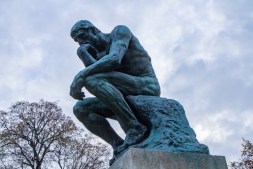Palindromic Patterns: Discovering Their Enchantment in Songs, Poems, and Movies
Palindromes are fascinating linguistic constructs that read the same backward as forward. They have intrigued writers, musicians, and filmmakers for centuries. In this article, we will explore how palindromic patterns manifest in music, poetry, and pop culture, revealing their enchanting qualities across different mediums.
The Nature of Palindromes
A palindrome is a word, phrase, number, or other sequences of characters that remains unchanged when reversed. Common examples include words like ‘level’ and ‘radar’, as well as phrases such as ‘A man a plan a canal Panama’. These symmetrical properties make palindromes not just clever wordplay but also serve as a tool for creativity in various forms of art.

Palindromes in Music
In music, palindromic structures offer unique compositional techniques. Many composers utilize symmetry to create pieces that evoke balance and harmony. For instance, the works of Johann Sebastian Bach often incorporate palindromic sequences where melodies mirror themselves at their midpoint. Modern artists like the band The Beatles also play with palindromic lyrics to enhance rhythmic qualities or thematic depth within songs such as “I’m So Tired” which features lines that reflect back on themselves both lyrically and melodically.
Poetic Palindrome Techniques
Poets have long appreciated the aesthetic appeal of palindromes. The form allows poets to create verses that challenge readers’ perceptions while maintaining rhythmical integrity. Poets like Lewis Carroll employed palindromes effectively in their work; his poem ‘A Palindrome’ showcases how playful language can convey deeper meaning through structure alone. Additionally, contemporary poets often experiment with palindromic phrases to establish themes of duality or reflection within their poems.
Cinematic Palindrome References
In film and television, directors sometimes use palindromes as symbolic devices representing themes such as time loops or cyclical narratives. For example, movies like “Memento” feature non-linear storytelling akin to palindrome structures where the story unfolds backward yet is essential for understanding the plot fully. Furthermore, shows like “Twin Peaks” employ mirrored scenes that echo earlier moments throughout the series—creating an effect reminiscent of literary palindrome techniques.
Pop Culture Phenomena Featuring Palindromes
Beyond traditional art forms, pop culture embraces palindromes in various entertaining ways—from merchandise featuring catchy phrases to social media challenges focusing on creating new ones. Popular games often integrate palindrome-related puzzles stimulating critical thinking while enhancing engagement among players. This has fostered a community around recognizing and appreciating these clever constructs across multiple platforms.
In summary, whether through haunting melodies in songs or thought-provoking verses in poetry—and even captivating narratives in films—palindrome patterns enrich our cultural landscape by adding layers of meaning and symmetry. As you explore music lyrics or dive into poetry collections next time around remember these enchanting linguistic gems are waiting just beneath the surface. Embrace your inner artist by experimenting with them creatively.
This text was generated using a large language model, and select text has been reviewed and moderated for purposes such as readability.











